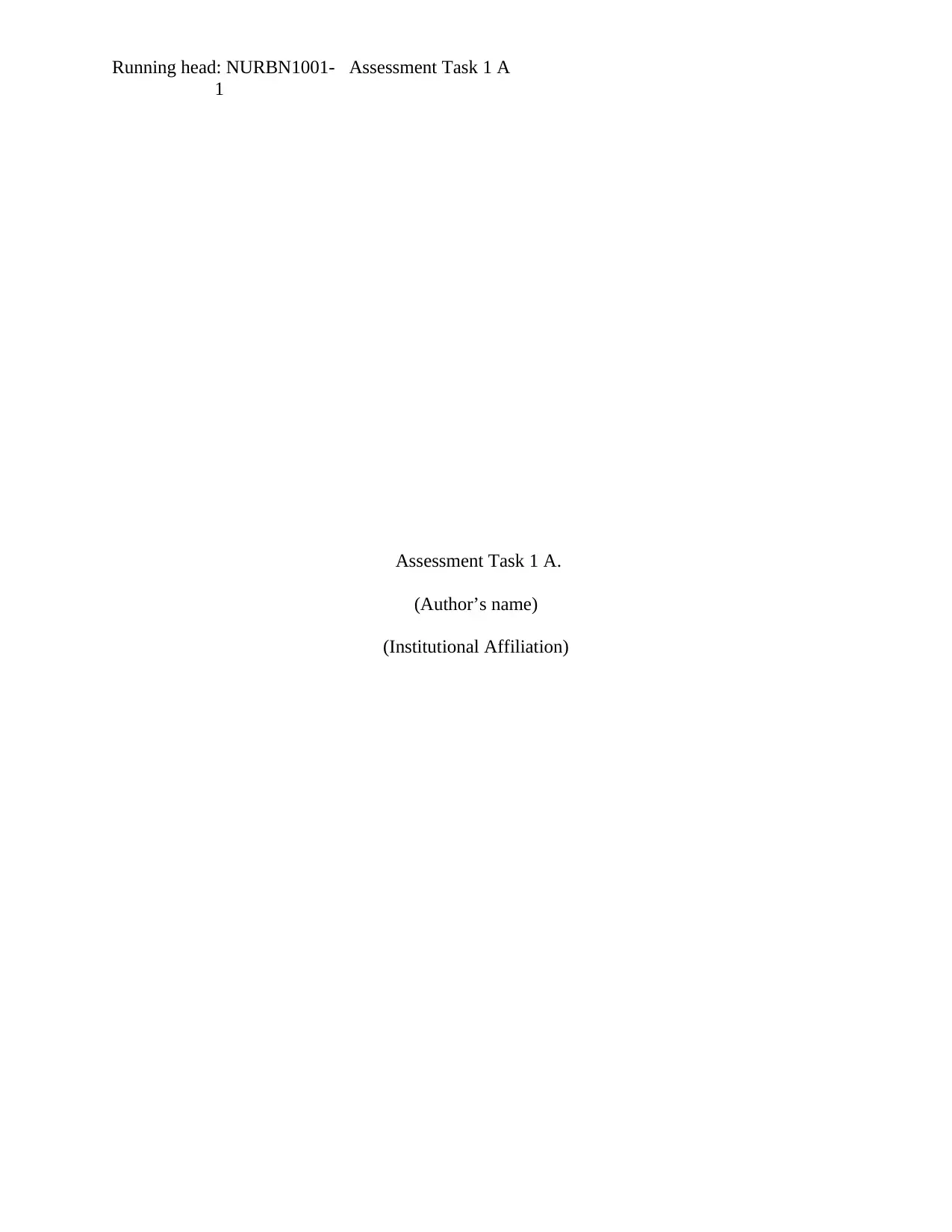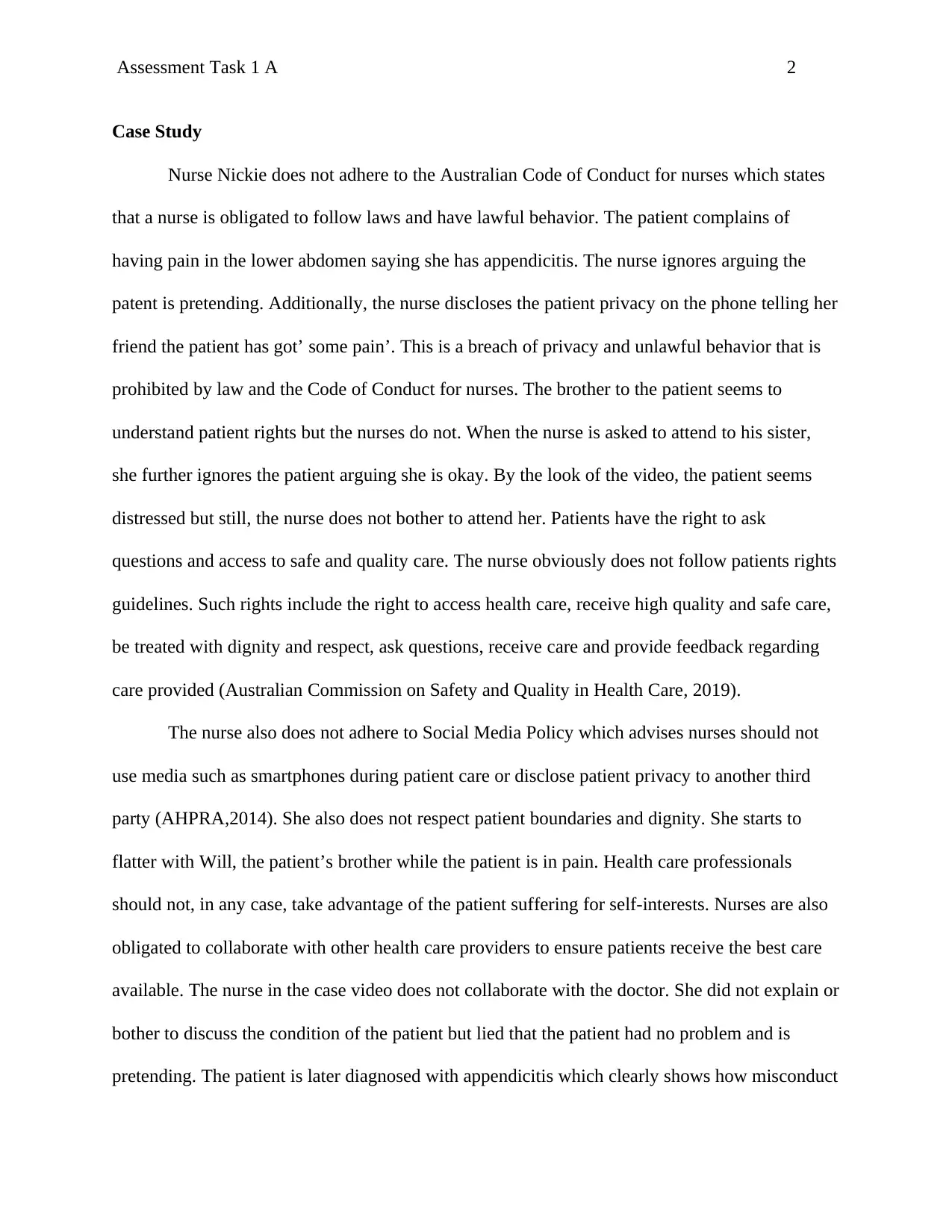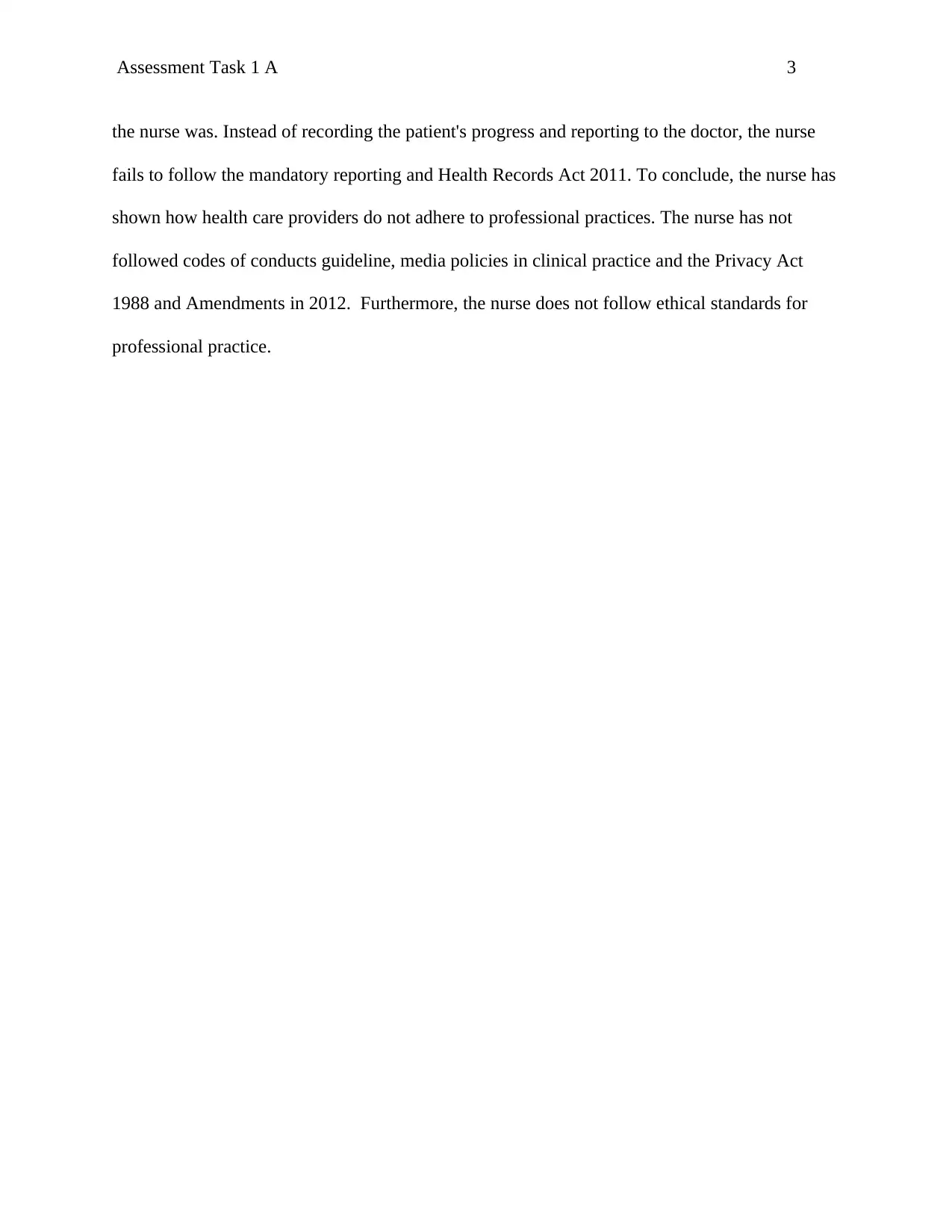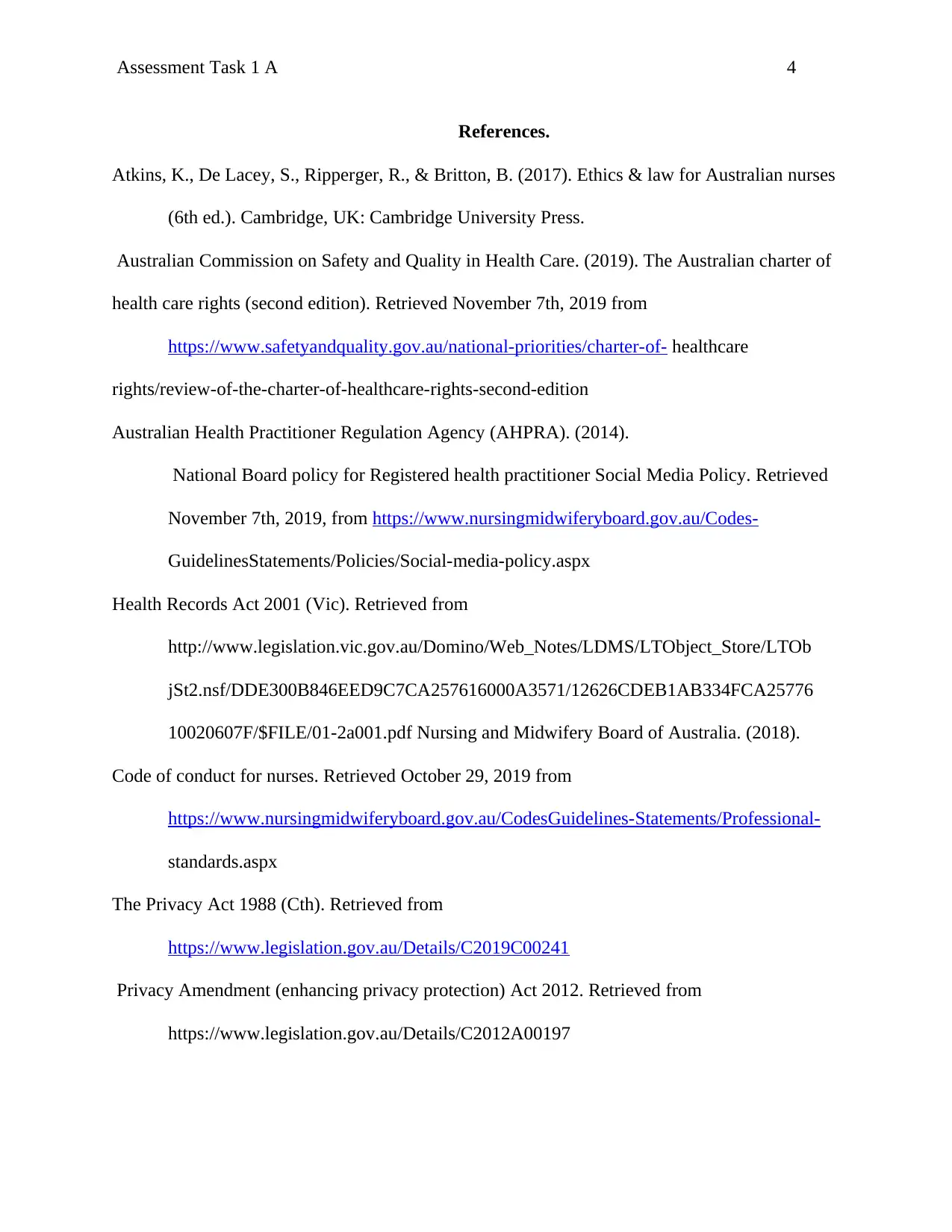Analysis of Professional Nursing Practice: NURBN 1001 Case Study, 2020
VerifiedAdded on 2022/08/22
|4
|676
|30
Case Study
AI Summary
This case study analyzes a scenario where a nurse fails to adhere to the Australian Code of Conduct, patient rights, and social media policies. The nurse disregards a patient's complaints of abdominal pain, dismisses her concerns, and discloses her private information. The analysis highlights violations of patient privacy, the right to safe and quality care, and ethical standards. The nurse's actions, including failure to collaborate with the doctor and adhere to mandatory reporting, are discussed in detail. The study references relevant legislation and professional guidelines, such as the Privacy Act 1988 and the Code of Conduct for Nurses, to demonstrate the importance of ethical and professional conduct in healthcare. The document underscores the consequences of non-compliance and emphasizes the need for healthcare professionals to uphold patient rights and adhere to legal and ethical frameworks.
1 out of 4











![[object Object]](/_next/static/media/star-bottom.7253800d.svg)